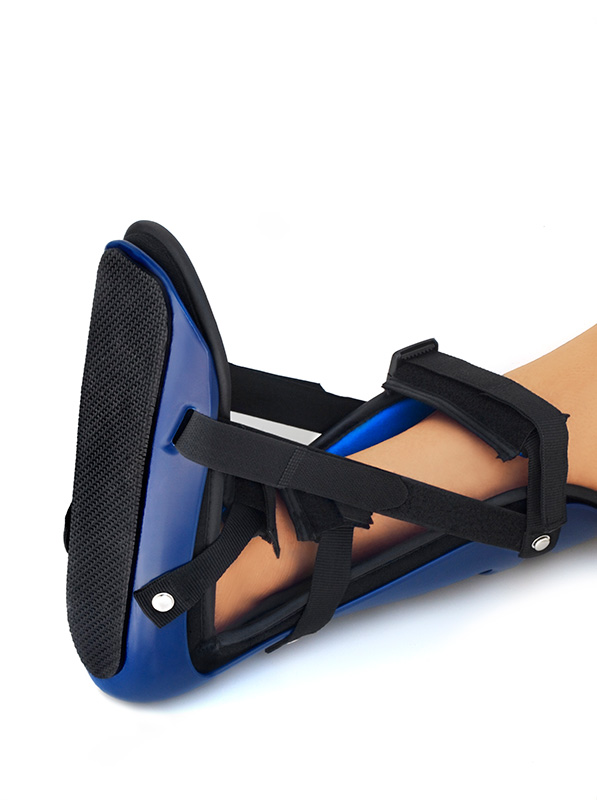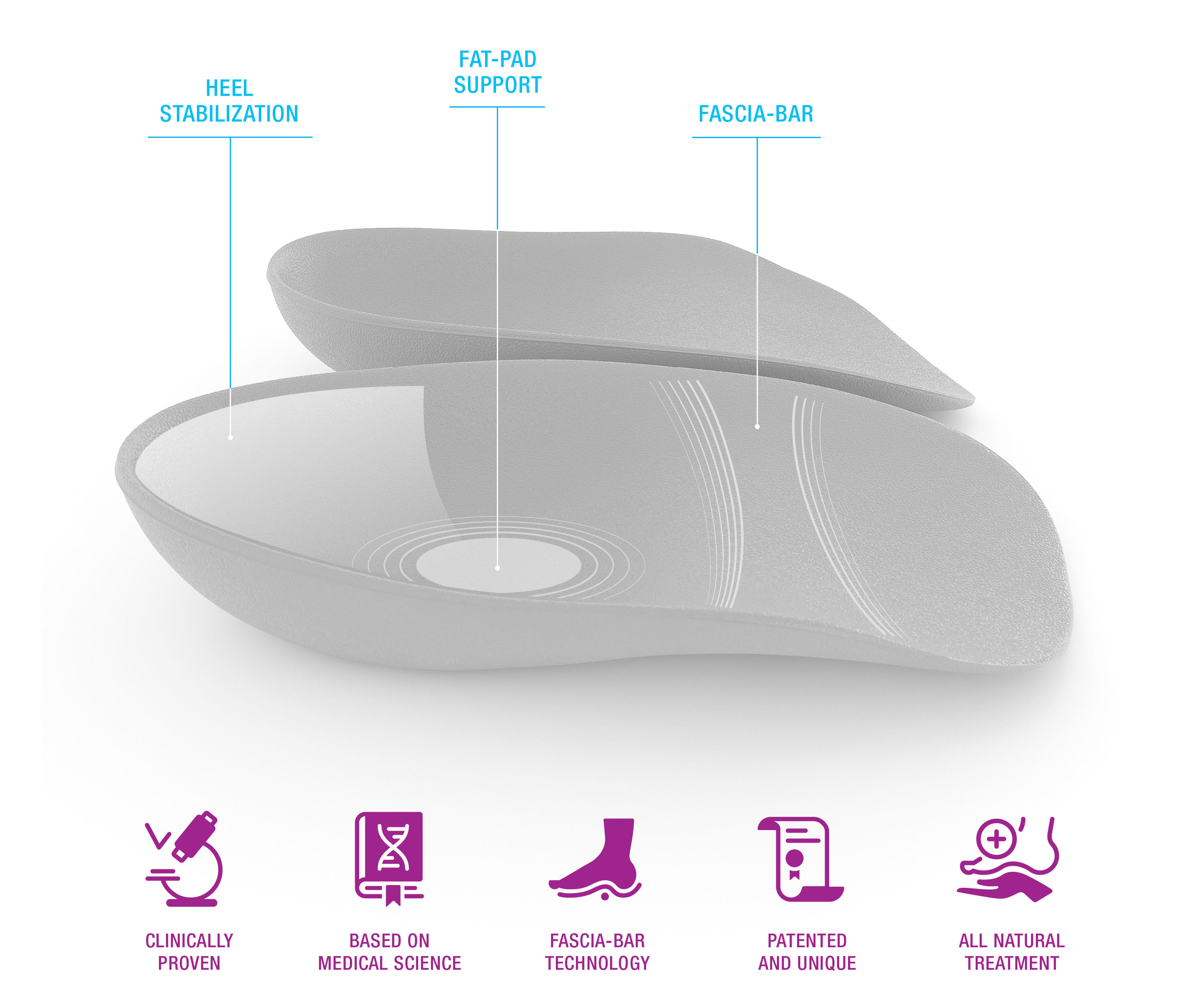 When it comes to heel pain, who wouldn’t want an extra helping hand (er, foot) to improve some of the pain and instability of a compromised arch?
When it comes to heel pain, who wouldn’t want an extra helping hand (er, foot) to improve some of the pain and instability of a compromised arch?
The more support the better–right?
That’s the logic behind many people’s choice to use a walking boot, night splint, or brace in addition to other conservative treatments for heel pain. However, while some of the devices that provide additional bracing and arch support can be extremely useful and beneficial when used properly, it’s important to know which products are best used for which purposes–and potential drawbacks of each.
Here’s what you need to know about braces, supports, and heel pain:
All About Heel Pain Walking Boots
A walking boot is sometimes prescribed by doctors or podiatrists for severe heel pain to help immobilize and rest the foot while the plantar fascia has a chance to heal. Walking boots can provide several important benefits, when used properly. But it’s also important to be aware of their potential drawbacks:
Pros
Walking boots are most helpful in cases where the pain from plantar fasciitis is very severe and has not responded to conservative treatment methods like stretching, icing, and orthotics. In these cases, an individual will often be preparing for surgery or other medical interventions, and needs a tool to alleviate severe pain while walking during the daytime. Walking boots can also be very helpful during the recovery period after foot surgery.
Cons
If you’re using a walking boot to treat mild to moderate plantar fasciitis, just remember this fact: in most cases of plantar fasciitis, the pain is worst in the morning when the plantar fascia is tight and unstretched. That pain usually improves somewhat throughout the day as the fascia moves, loosens, and stretches. While rest is important to healing the inflammation and small tears that a damaged fascia sustains, you should take care in how much you use immobilization of the foot as a treatment. Strengthening, stretching, and supporting the fascia while allowing your foot to move normally will ultimately result in a healthier, stronger fascia as well as preventing surrounding muscles and ligaments from atrophy through disuse.
All About Night Braces/Night Splints

Night braces or night splints keep the foot gently flexed while you sleep. Why? To significantly reduce that hallmark morning pain associated with plantar fasciitis. If the foot is able to maintain this stretch all night long, the fascia stays stretched, limber, and significantly less painful in the morning:
Pros
A comfortable, quality, properly fitted night splint or brace with the right amount of stretch can be an invaluable tool in reducing morning pain from plantar fasciitis. And if a traditional night splint feels too bulky or uncomfortable, there are several great options for sock night splints that provide a stretch on par with their heavyweight counterparts. Night splints and socks can be a great complement to the stretches you do during the day to strengthen and stretch your fascia.
Cons
The wrong night splint or brace can be uncomfortable at best, with the wrong amount of stretch at worst. You’ll want to note the width of the night splint compared to your foot, and how comfortable the straps are. It can be extremely difficult to sleep if the straps dig into your skin, and the brace can be rendered less effective if your foot slides around when you change position during the night. Pay close attention to user reviews and company reputation when purchasing a night splint or brace, to get a good idea of what customers’ experiences are like.
So, What About Orthotics?

Any conversation involving support, stretching, and bracing should mention orthotics. Can the type of support offered by orthotics be a roadblock to healing in the same way improper use of a walking boot can? And are some types of orthotics more effective in improving plantar fasciitis than others?
While it’s true that not all orthotics are created equal–many are just shaped foam that collapses over a short period of time–orthotic inserts made especially for plantar fasciitis will help rather than hinder your healing in the support department. The arch of the foot is ideally suited to a particular height. Too low or too high, and the foot has a hard time distributing body weight and impact properly. Add in factors of overuse, high impact activities, and fluctuating body weight? It’s no wonder our arches can use a little support in maintaining that optimal height. Wearing orthotics is simply a way to help ensure that your arch maintains a healthy position, so it doesn’t suffer injury.
And when the arch does become compromised, using conservative treatment methods like stretching, icing, rest, night splints, and walking boots in more severe cases, can help manage the pain from plantar fasciitis while getting your arch back into shape.




A friend of mine gave me a walking boot to use for my planners cuz I don’t go to the podiatrist for another week I’m in so much pain would it be bad for me to wear it for a couple of days